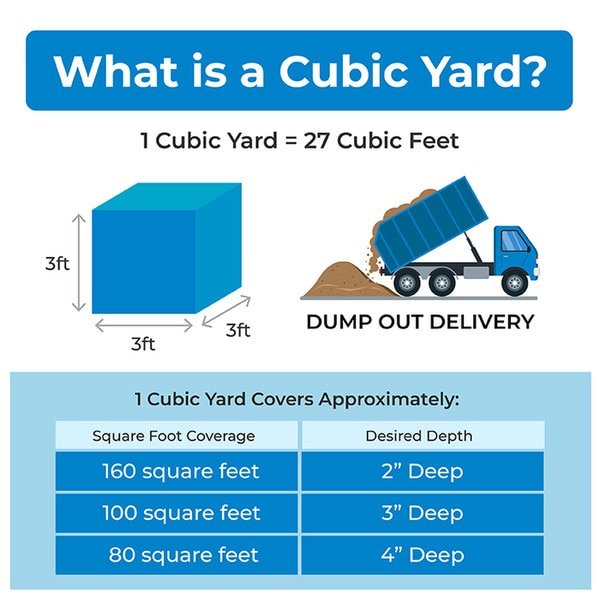A yard of sand measures approximately 27 cubic feet. This vital measurement is essential for anyone involved in construction or landscaping projects. Knowing ‘how much is a yard of sand’ can save you time and money when ordering materials. Let’s delve deeper into the significance of this unit of measurement and how it impacts your next project. Understanding the volume of sand you need can make a world of difference in the success of your endeavor. Let’s explore the nuances of this fundamental measurement together.
How Much is a Yard of Sand? Exploring the Costs and Uses
When it comes to landscaping, construction, or various DIY projects, one common question that often arises is, “How much is a yard of sand?” Understanding the quantity, cost, and different types of sand can help you plan your projects effectively. In this comprehensive guide, we will delve into the world of sand, exploring its various uses, costs, and factors to consider when purchasing a yard of this versatile material.
The Basics of Sand
Sand is a granular material composed of finely divided rock and mineral particles. It is one of the most abundant natural resources on Earth, found in various forms and colors. Sand is widely used in construction, landscaping, gardening, and other applications due to its versatility and ability to provide stability and drainage in different settings.
Types of Sand
Before we dive into the cost of a yard of sand, it’s essential to understand the different types available. Here are some common types of sand used in construction and landscaping:
- Play Sand: Soft and finely grained, ideal for children’s sandboxes and recreational areas.
- Mason Sand: Also known as white sand, perfect for masonry work and creating mortar mixes.
- Concrete Sand: Coarse sand used in concrete mixes for strength and durability.
- Fill Sand: Compacted sand used as a base for pavers, roads, and other construction projects.
Calculating the Amount of Sand Needed
Now, let’s get to the nitty-gritty of determining how much sand you need for your project. Sand is typically measured in cubic yards, a unit of volume that represents a cube measuring one yard on each side. To calculate the amount of sand required, you’ll need to consider the area to be covered and the desired depth of the sand layer.
The formula to calculate the volume of sand needed is:
Volume = Area (in square feet) x Depth (in feet) ÷ 27
For example, if you have a rectangular area that measures 10 feet by 20 feet and you want to spread the sand to a depth of 0.5 feet, the calculation would be as follows:
Volume = 10 x 20 x 0.5 ÷ 27 = 3.7 cubic yards
The Cost of a Yard of Sand
When it comes to purchasing sand, the cost can vary depending on the type of sand, location, and quantity needed. On average, the price of a yard of sand ranges from $20 to $50, but this can fluctuate based on market conditions and specific requirements.
Factors that can influence the cost of sand include:
- Transportation costs
- Quality and type of sand
- Supplier pricing
- Seasonal demand
It’s important to obtain quotes from multiple suppliers and compare prices to ensure you get the best deal for your project. Additionally, consider the delivery costs and any additional fees that may apply when purchasing sand in bulk.
Uses of Sand in Various Projects
Sand has a wide range of applications in different projects and industries. Here are some common uses of sand:
1. Landscaping
In landscaping, sand is used for creating pathways, leveling ground, and providing drainage in gardens and yards. It can also be mixed with soil to improve texture and aeration for plant growth.
2. Construction
Sand is a fundamental material in construction projects, used in concrete mixes, mortar, and as a base for laying bricks, stones, and pavers. It provides stability, strength, and durability to various structures.
3. Playground Surfaces
Play sand is often used in playgrounds and recreational areas to create safe and engaging play surfaces for children. Its fine texture and ability to absorb impact make it an ideal choice for play areas.
4. Erosion Control
Sand is commonly utilized in erosion control measures such as sandbags and dune restoration projects. It helps stabilize soils and prevent erosion in coastal areas and construction sites.
In conclusion, understanding how much a yard of sand costs and its various uses can help you plan and execute your projects efficiently. Whether you’re working on a landscaping project, construction site, or DIY endeavor, sand plays a crucial role in providing stability, drainage, and aesthetic appeal to your designs. Remember to consider the type of sand needed, calculate the required quantity, and compare prices from different suppliers to make informed decisions. With the right knowledge and preparation, you can make the most of this versatile material in your next project!
Rock N Dirt Yard Common Questions How Big Is One Yard
Frequently Asked Questions
How much sand is in a yard?
A yard of sand typically weighs around 2,700 pounds or 1.35 tons. This quantity is equivalent to approximately 1.5 cubic yards of sand, which is a standard measurement used for bulk material like sand.
What factors can affect the cost of a yard of sand?
The cost of a yard of sand can be influenced by various factors such as the quality of the sand, the location of the supplier, transportation fees, and any additional services like delivery or spreading. Prices can also fluctuate based on market demand and availability.
How do I calculate how much sand I need for a project?
To determine the amount of sand needed for a project, you can use the formula: Volume = Length x Width x Depth. Measure the dimensions of the area you want to fill with sand and then calculate the volume required. Divide this by 1.5 (since 1 yard is approximately 1.5 cubic yards) to determine the number of yards needed.
Final Thoughts
In conclusion, understanding how much is a yard of sand is essential for any landscaping or construction project. A yard of sand typically covers about 80 square feet at a depth of 4 inches, making it a common measurement used in the industry. By knowing this measurement, you can accurately calculate the amount of sand needed for your project, saving time and money in the process. Next time you’re planning a project, be sure to consider how much is a yard of sand to ensure you have the right amount for the job.





